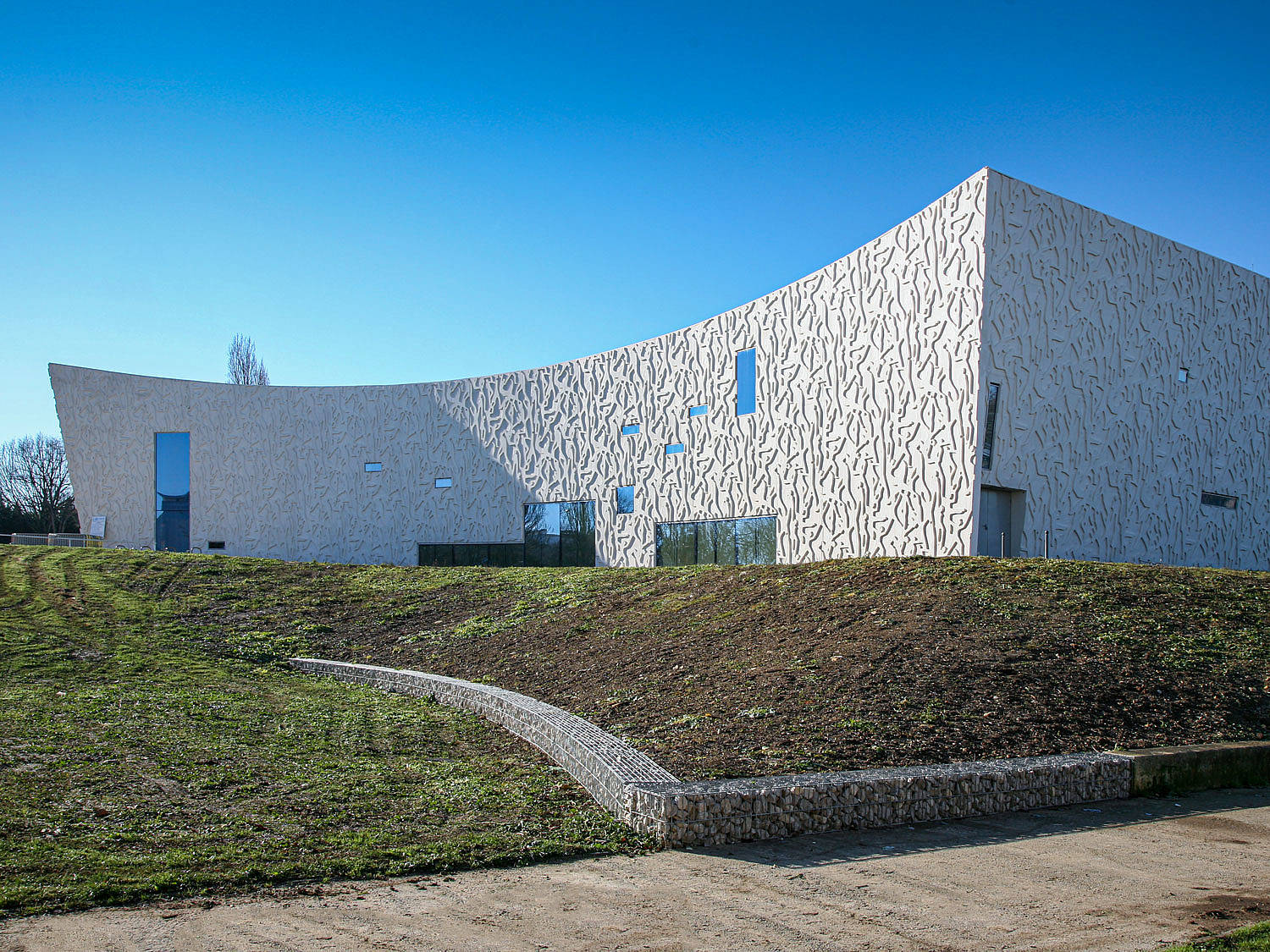Espace Bernard Giraudeau, La Rochelle, France
The cultural center in the French city of La Rochelle reveals its innermost nature to the outside world. The façade is decorated with numerous dancing motifs.
The new cultural center in La Rochelle greets its visitors playfully: the sunlight skims over the surface of the white concrete façade, only fully revealing its motif at second glance. What initially seems to be a random pattern turns out to be an interplay of interconnected dancing figures on closer inspection.
The beautiful façade reveals the purpose of the building from the outside: it is used for private and public events and as a theater. The Espace Bernard Giraudeau can accommodate up to 400 people. The cultural center is named after the city’s famous son, actor Bernard Giraudeau, who appeared in the French teenage comedy "La Boum – The Party" in 1980 and later drew acclaim in Germany for his roles in "Year of the Jellyfish" and Rainer Werner Fassbinder's tragedy "Water drops on Burning Rocks". Giraudeau died in 2010 and his birthplace is now paying homage to him with the new building.
The project was commissioned by the city council and cost 2.7 million euros. French architectural office BIM! took care of the planning. "When we arrived at the site, there were no constraints or restrictions whatsoever", say the project architects. They found inspiration in the surrounding architecture: "We chose to remain with the concrete that has been omnipresent in this neighborhood since the 1960s and to show that we can build poetry in motion", say the architects. They designed a building with curved exterior walls whose dynamic appearance is enhanced by the dancing motifs on the façade.
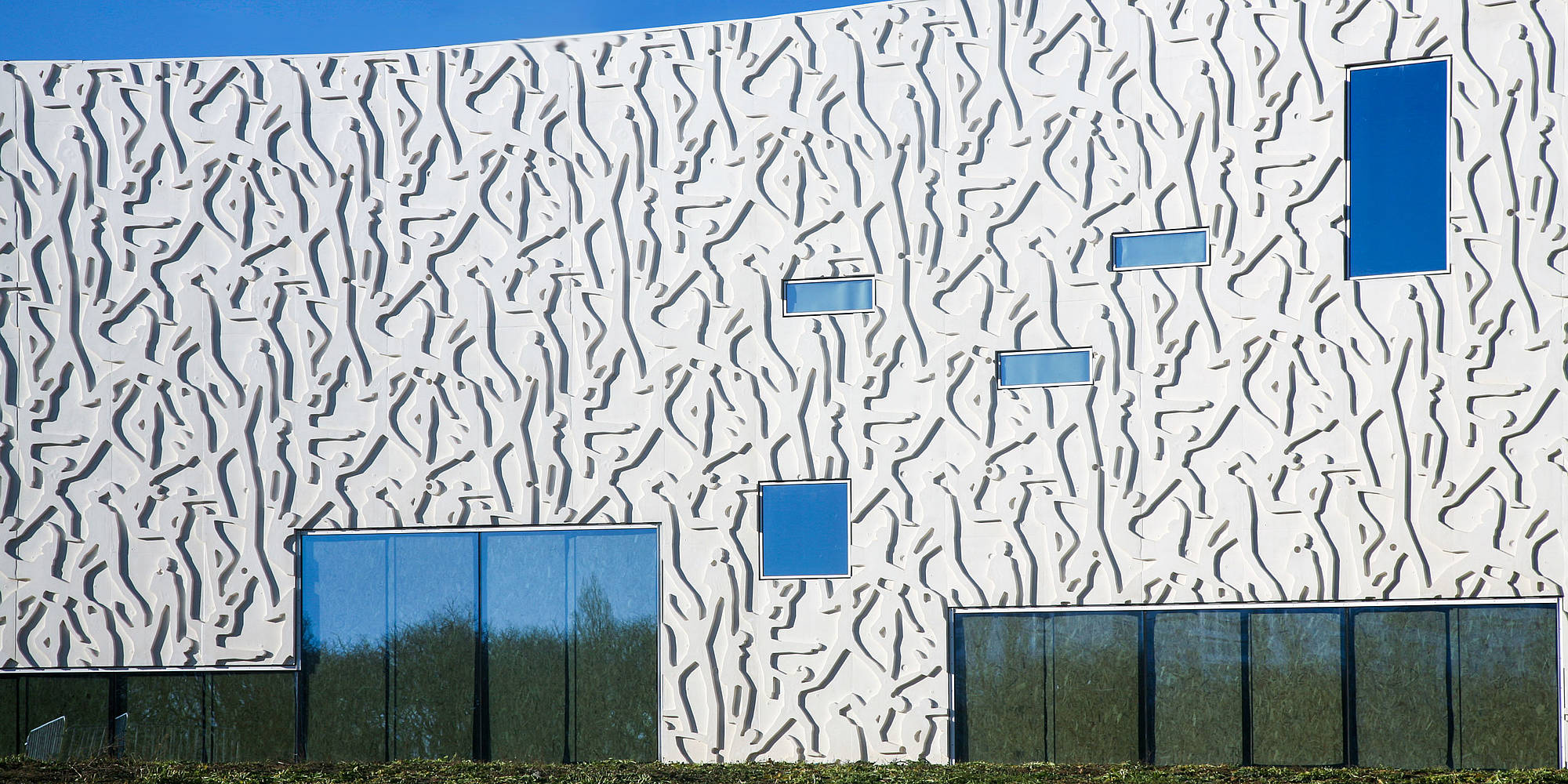
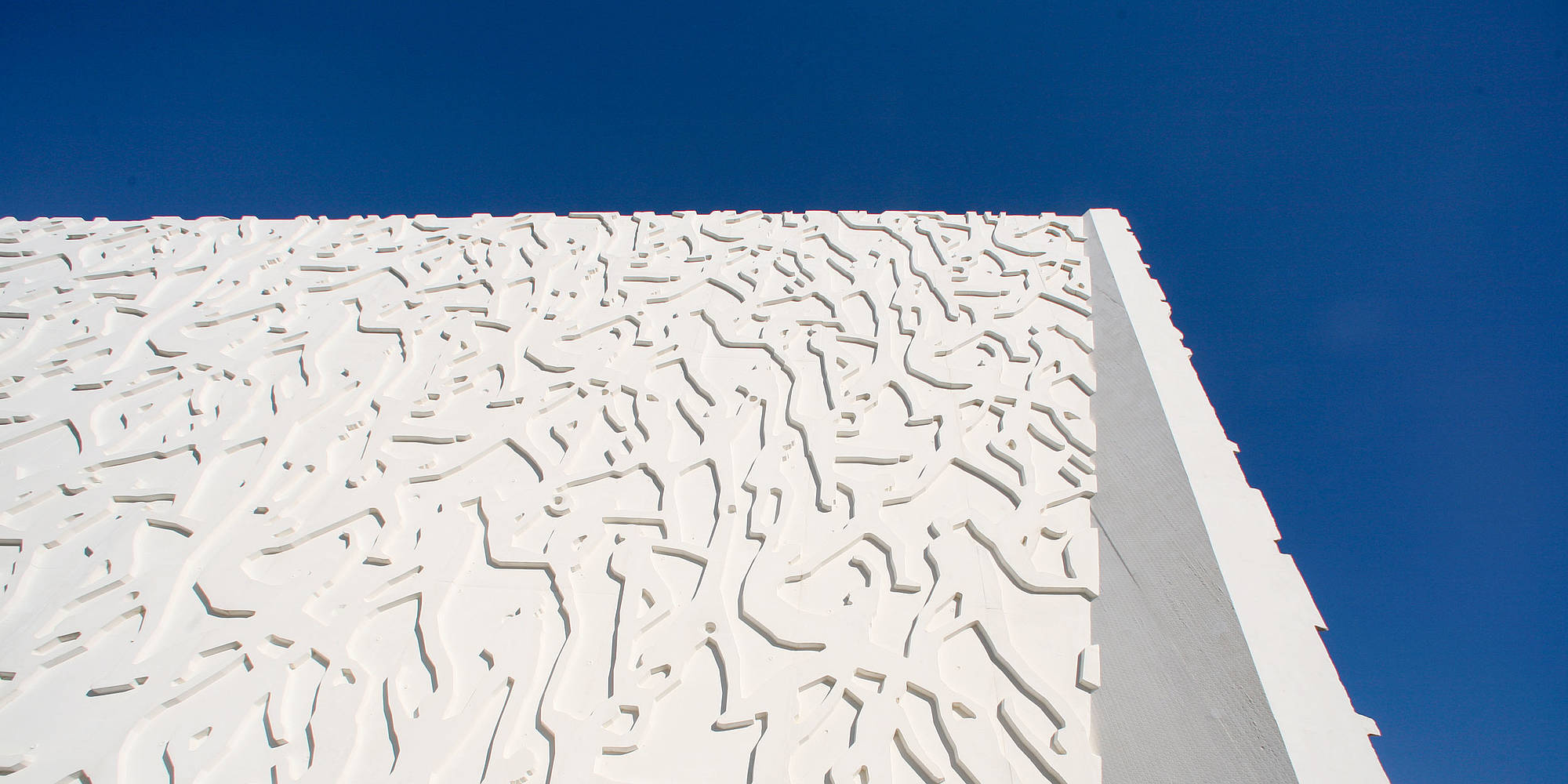
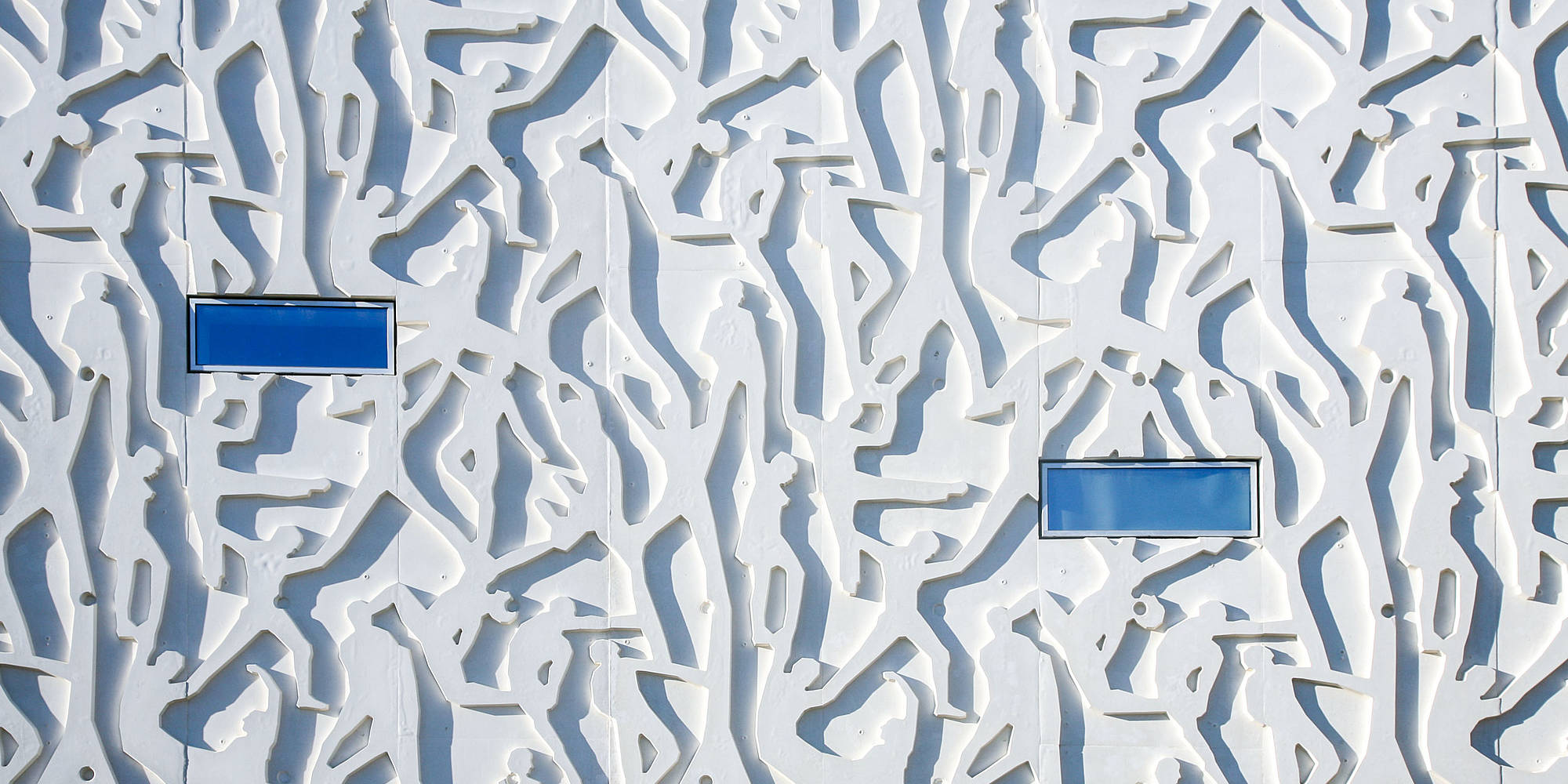
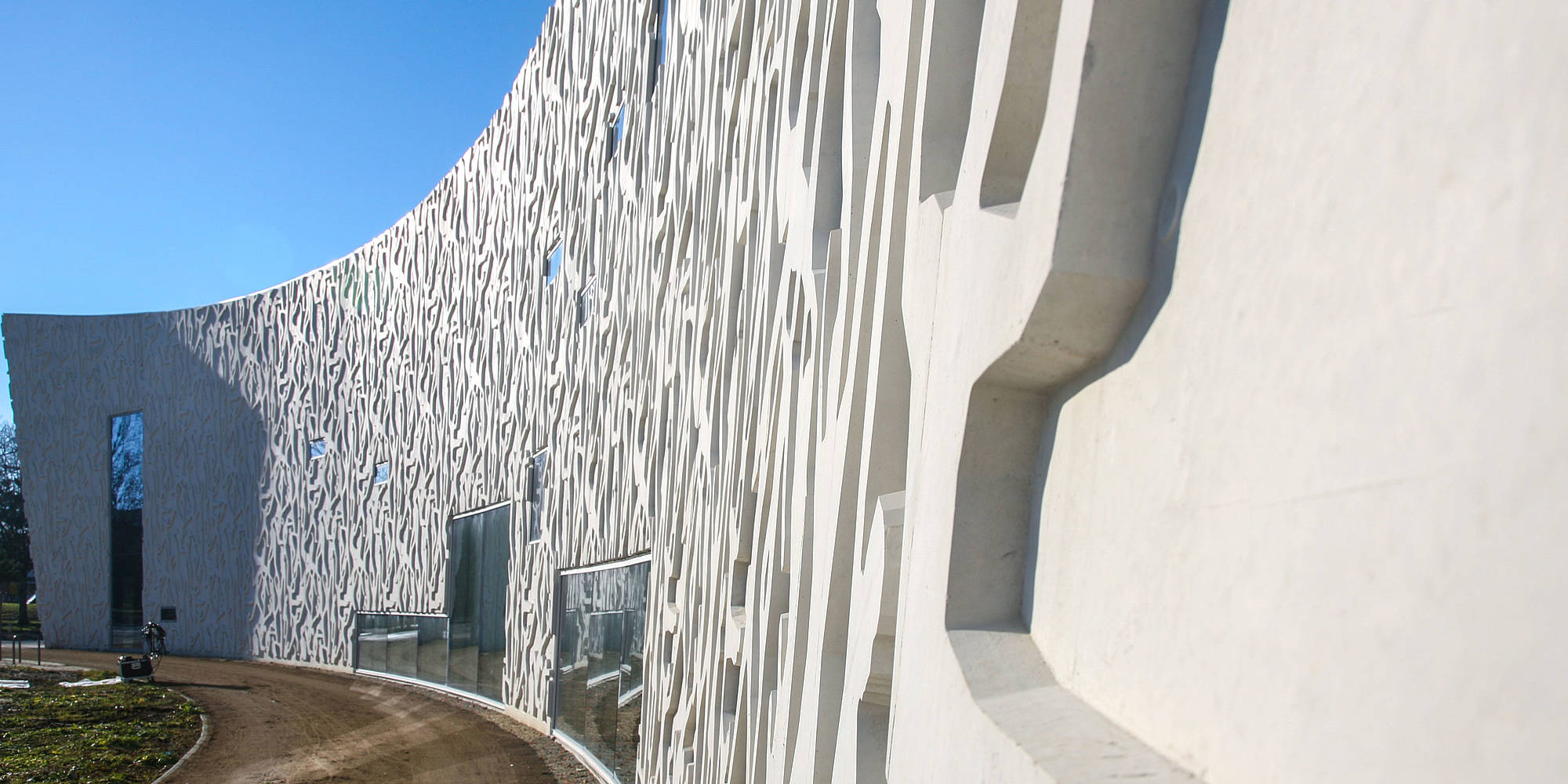
During the daytime, the four-centimeter-deep wall relief is animated by the play of light and shadow. From a distance, the building appears to be a curved white monolith spanned by an arbitrary pattern. "Up close, the building gains a human scale and the movements of the figures become more obvious as they interconnect with one another."
Elastic formliners were used to apply the dancers to the façade. Following the ideas and drawings of the architects, RECKLI initially built an individual positive model from a panel material on which the formliner was then cast. The elastic mold is inserted into the formwork during concreting and can easily be removed from the concrete surface after the concrete hardens. It guarantees the detailed reproduction of the motifs without breakouts and thanks to its elasticity it can be reused from 10 to 100 times.
In order to render the pattern on the façade as seamlessly as possible, the architects opted for in-situ concrete. The textured formliners were therefore used directly on the construction site. The design has been divided into sections and staggered to avoid a monotonous repetition of the motif. "When placed in the formwork, each section was shifted one-third up without affecting the harmony of the design as a whole." The design, form and implementation according to the French energy standard HPE make this an exemplary project in terms of sustainable and creative construction.
